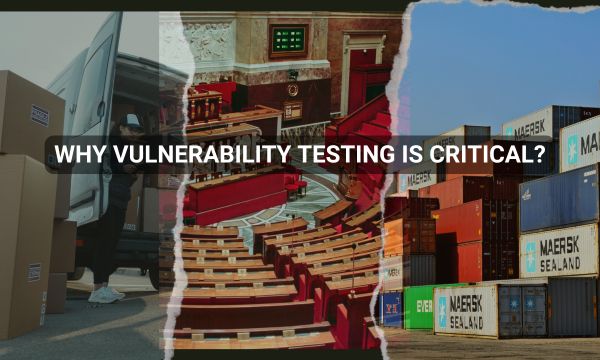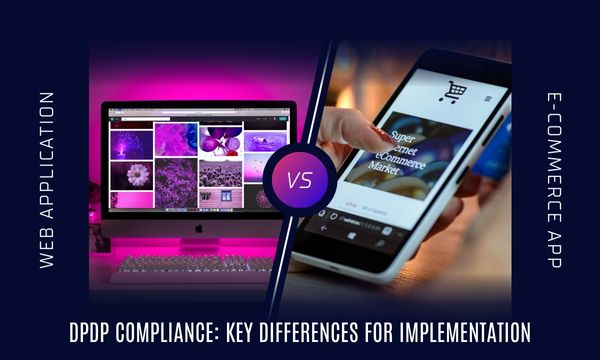
IT infrastructure security has become a mission-critical priority in an era where businesses and governments are more connected than ever. Whether it's ensuring the uninterrupted flow of goods across borders or safeguarding sensitive governmental data, IT systems form the backbone of operations in sectors like logistics and government. However, this connectivity comes with a heightened risk of cyberattacks, which can cause operational paralysis, reputational damage, and significant financial losses.
IT infrastructure security testing is a vital process that identifies, assesses, and mitigates these risks before malicious actors can exploit them. This blog will explore the unique vulnerabilities in IT infrastructure within the logistics and government sectors and explain how thorough security testing can prevent critical breaches.
What is IT Infrastructure Security Testing?
IT infrastructure security testing involves a comprehensive evaluation of an organization’s digital environment, including networks, servers, databases, firewalls, and other critical systems. The goal is to identify vulnerabilities, misconfigurations, and weak points that could be exploited by attackers.
The testing process typically includes:
* Network Penetration Testing: Simulating attacks on your network to assess its defences and identify weaknesses.
* Configuration Auditing: Ensuring that your infrastructure is correctly configured to protect against known vulnerabilities.
* Security Patch Testing: Checking that all software is up to date with the latest security patches, reducing the risk of zero-day vulnerabilities.
* Access Control Testing: Reviewing the effectiveness of user authentication and authorization systems to prevent unauthorized access.
By proactively identifying these risks, security testing helps enterprises strengthen their defence mechanisms, protecting both internal systems and external-facing services.
Common IT Infrastructure Vulnerabilities in the Logistics Sector
The logistics industry is the lifeblood of global commerce, managing the transportation of goods and services across borders. As companies increasingly rely on digital systems to manage supply chains, track shipments, and handle inventory, the attack surface for cybercriminals expands. Here are some of the most common vulnerabilities found in logistics IT infrastructure:
1. Unsecured Data Transfer
Logistics companies often exchange sensitive information with multiple partners, including suppliers, customs authorities, and customers. Data such as shipment details, financial transactions, and inventory information are valuable targets for attackers. If this data is transmitted without encryption, it becomes easy for cybercriminals to intercept and manipulate.
* Real-World Example: In 2020, CWT Travel, a large logistics firm, paid over $4.5 million in ransom after hackers accessed 30,000 files through an insecure network. The breach led to disrupted business operations and significant financial losses.
2. Third-Party Risks
With the logistics industry relying on multiple third-party vendors, including warehouses, customs brokers, and transportation companies, the supply chain is exposed to risk. A cyberattack on a partner's systems could cascade into your network, leading to operational shutdowns or data theft.
* Real-World Example: The NotPetya ransomware attack in 2017 affected global shipping giant Maersk, halting port operations worldwide and costing the company nearly $300 million.
3. Legacy Systems
Many logistics companies still rely on outdated or legacy systems that lack modern security features, making them highly susceptible to attacks. These older systems may not be designed to handle current cybersecurity threats, leaving them exposed to exploitation.
* IT Infrastructure Security Testing Solution: Regular testing can identify these vulnerabilities, ensuring that outdated systems are either upgraded or isolated to mitigate risks.
Common IT Infrastructure Vulnerabilities in Government Organizations
Government organizations handle some of the most sensitive data and critical infrastructure, making them prime targets for cyberattacks. Whether it's protecting classified information or ensuring the continuous operation of public services, robust IT infrastructure is non-negotiable. Here are the most common vulnerabilities:
1. Nation-State Attacks
Governments are frequently targeted by nation-state actors who have the resources and patience to carry out advanced, persistent attacks. These actors often seek to steal sensitive information, disrupt critical services, or gain control over governmental operations.
* Real-World Example: In 2020, SolarWinds, a trusted IT management platform, was compromised, leading to a sophisticated supply chain attack that impacted multiple U.S. government agencies, including the Department of Homeland Security and Treasury. The attack exposed sensitive data and highlighted the critical importance of IT infrastructure security.
2. Insider Threats
Insider threats, whether malicious or accidental, pose a significant risk to government IT infrastructure. Employees with access to sensitive data or systems could inadvertently create vulnerabilities through poor cybersecurity practices, such as using weak passwords or falling victim to phishing attacks.
* IT Infrastructure Security Testing Solution: Access control and user privilege testing can help limit the damage caused by insider threats, ensuring that only authorized personnel have access to critical systems.
3. Critical Infrastructure Exposure
Governments rely on critical infrastructure such as power grids, water treatment facilities, and transportation systems, all of which are increasingly digitized and interconnected. If cybercriminals exploit vulnerabilities in these systems, it could lead to catastrophic consequences for public safety and security.
* Real-World Example: In 2021, a water treatment plant in Florida was hacked, and the attackers tried to increase the amount of sodium hydroxide in the water supply to dangerous levels. Fortunately, the attack was detected in time, but it underscored the risks associated with insecure IT infrastructure in critical public utilities.
How IT Infrastructure Security Testing Can Prevent Critical Breaches
Both logistics companies and government organizations can benefit greatly from comprehensive IT infrastructure security testing. By identifying vulnerabilities early, organizations can take the necessary steps to fix them before an attack occurs.
Here’s how security testing can help prevent critical breaches:
1. Early Detection of Vulnerabilities
Regular security testing helps organizations detect potential weak points in their IT infrastructure. This proactive approach allows companies and government agencies to address these issues before they can be exploited.
2. Reducing Third-Party Risks
With many industries relying on third-party vendors, testing the security of partner networks and the integration between systems is crucial. Security testing can reveal risks associated with third-party providers and recommend strategies to mitigate these risks.
3. Strengthening Security Policies
IT infrastructure security testing doesn’t just identify technical vulnerabilities; it also helps organizations review and improve their security policies. Whether it's implementing better password management practices or enhancing encryption protocols, testing can help fine-tune security measures across the board.
4. Regulatory Compliance
Industries like logistics and government are subject to a myriad of regulations regarding data protection and cybersecurity. Testing your IT infrastructure ensures compliance with these regulations, reducing the risk of legal penalties and improving overall operational resilience.
Conclusion
In sectors like logistics and government, where the stakes are high and the attack surface is broad, the security of your IT infrastructure must be a top priority. IT infrastructure security testing is an essential part of a robust cybersecurity strategy, helping organizations identify vulnerabilities, secure critical systems, and prevent costly breaches.
Investing in proactive security testing today can save your organization from significant disruptions, financial losses, and reputational damage tomorrow. Whether you’re managing supply chains across the globe or safeguarding national security, securing your IT infrastructure is non-negotiable.
Is your IT infrastructure secure? Don’t wait for a cyberattack to find out. Contact us today to schedule a comprehensive IT infrastructure security test and ensure your systems are prepared for tomorrow’s threats.



